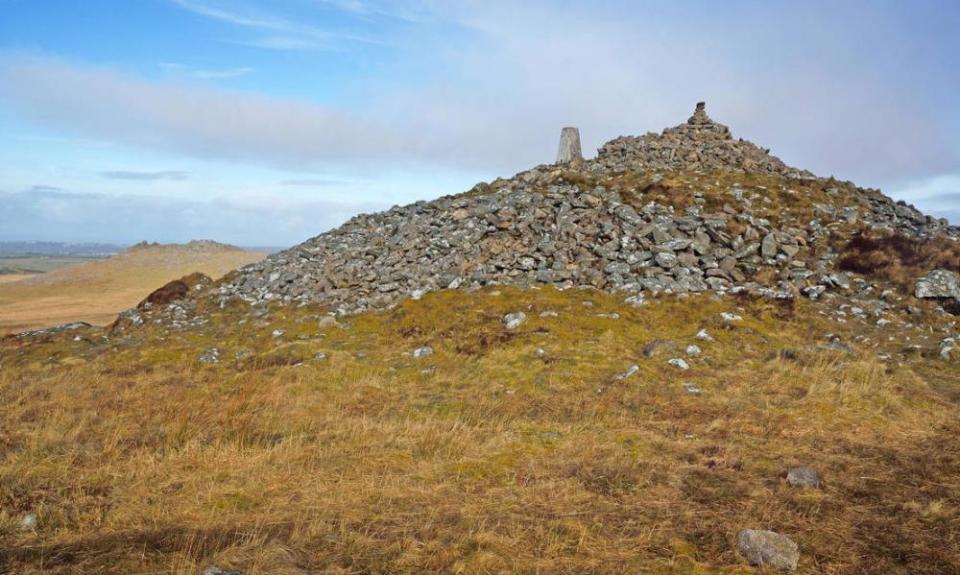Country diary: among the ancient stone of Bodmin, hawthorn spreads like snow
Up on the eastern edge of Bodmin Moor, effulgent hawthorn blossom draws attention from the bumps and the hollows of early mineral workings, and the tool-marked edges of surface stone that used to be cut for use locally and further afield. Full-out white and budding flowers now cover the tangled twigs; winter-blasted gorse sprouts new shoots; bracken unfurls from the pale turf starred with yellow tormentil, and the exposed granite of boulders and old boundary walls sparkle beneath the azure sky.
From the village of Minions, visitors venture towards the stone circles of the famous Hurlers, overlooked by prehistoric Stowe’s Pound with its group of precipitously balanced tors, and the Cheesewring, another tor precarious above the quarry face. Away from the busy car park, a quiet path follows the glint of granite setts on the trackbed of the old mineral railway that transported ores and stone downhill towards Liskeard and the port of Looe. Below this way, jackdaws clack about the ruins of the engine house, built in 1907 for the last of the big Cornish pumping engines. Apart from sterile burrows of mine waste, hawthorn spreads here like snow.

In the distance, across the greenery of pastures, woods and arable fields in the Lynher valley, is Kit Hill. Close to home, this is the intermediate outcrop of granite upland between here and the blue horizon of Dartmoor. More whiteness encompasses the hamlet of Henwood, set below rocky Sharptor. And off the medieval droveway that leads from the lower farms towards the moor, stunted foxgloves flourish among part-submerged boulders and the shade of spreading thorns.
On the adjoining Langstone Down, hard-grazed moorland has still to show much summer growth, but some 50 cows and their first few calves congregate on the airy summit, in view of the peak of Brown Willy and the cairns on Brown Gelly. Even in this remote part of the moor, out of sight of habitation, loose moorstone was laboriously split so that blocks could be manoeuvred towards a tentacle of the railway that reached the tors of Bearah and Kilmar, in use until the end of the 19th century.
• Country Diary is on Twitter at @gdncountrydiary

 Yahoo Movies
Yahoo Movies 